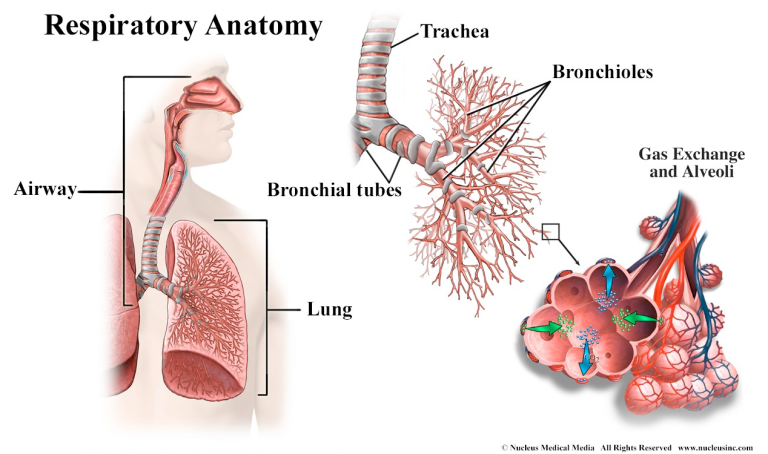
The lungs are two spongy, air-filled organs located in the chest cavity (thorax) on either side of the heart. They are responsible for taking in oxygen from the atmosphere and releasing carbon dioxide, a waste product of cellular respiration, back into the atmosphere.
Each lung has an apex, base, medial surface, costal surface, and diaphragmatic surface [Image of Lung apex base medial surface costal surface diaphragmatic surface:
Apex:
The pointed tip of the lung that extends superiorly to the first rib.
Base:
The broad, dome-shaped inferior surface of the lung that rests on the diaphragm.
Medial surface:
The inner surface of the lung that faces the mediastinum, the middle compartment of the thoracic cavity. The hilum, a slit-like opening where the bronchi, blood vessels, nerves, and lymphatics enter and exit the lung, is located on this surface.
Costal surface:
The smooth, convex outer surface of the lung that lies against the ribs.
Diaphragmatic surface:
The concave undersurface of the lung that rests on the diaphragm. The right diaphragmatic surface is deeper than the left because of the presence of the liver.
Lobes and Fissures
The lungs are further divided into lobes by fissures. The right lung has three lobes:
Superior lobe
Middle lobe
Inferior lobe
The left lung has two lobes:
Superior lobe
Inferior lobe
The fissures are deep folds in the pleural surface of the lung that extend inward from the surface. They help to increase the surface area of the lungs for gas exchange.
Internal Anatomy
The internal structure of the lungs is designed to maximize gas exchange between the inhaled air and the blood. The air travels from the trachea into the bronchi, which branch into smaller and smaller bronchioles. The bronchioles end in tiny air sacs called alveoli. The alveoli have very thin walls that are surrounded by capillaries, tiny blood vessels. Oxygen diffuses from the alveoli into the blood, and carbon dioxide diffuses from the blood into the alveoli. The air is then exhaled out of the lungs.
Trachea:
The windpipe, a tube-shaped organ that carries air from the nose and mouth to the bronchi.
Bronchi:
Two large tubes that branch off from the trachea and enter the lungs.
Bronchioles:
Smaller tubes that branch off from the bronchi and continue to subdivide within the lungs.
Alveoli:
Tiny air sacs where gas exchange takes place.
Capillaries:
Tiny blood vessels that surround the alveoli.
The lungs are covered by a pleura, a moist, two-layered membrane that lines the chest cavity and the lungs themselves. The pleura helps to lubricate the lungs and allows them to move smoothly against the chest wall during respiration. The space between the two layers of the pleura is called the pleural space. It is normally filled with a small amount of fluid that helps to create a vacuum that holds the lungs against the chest wall.
